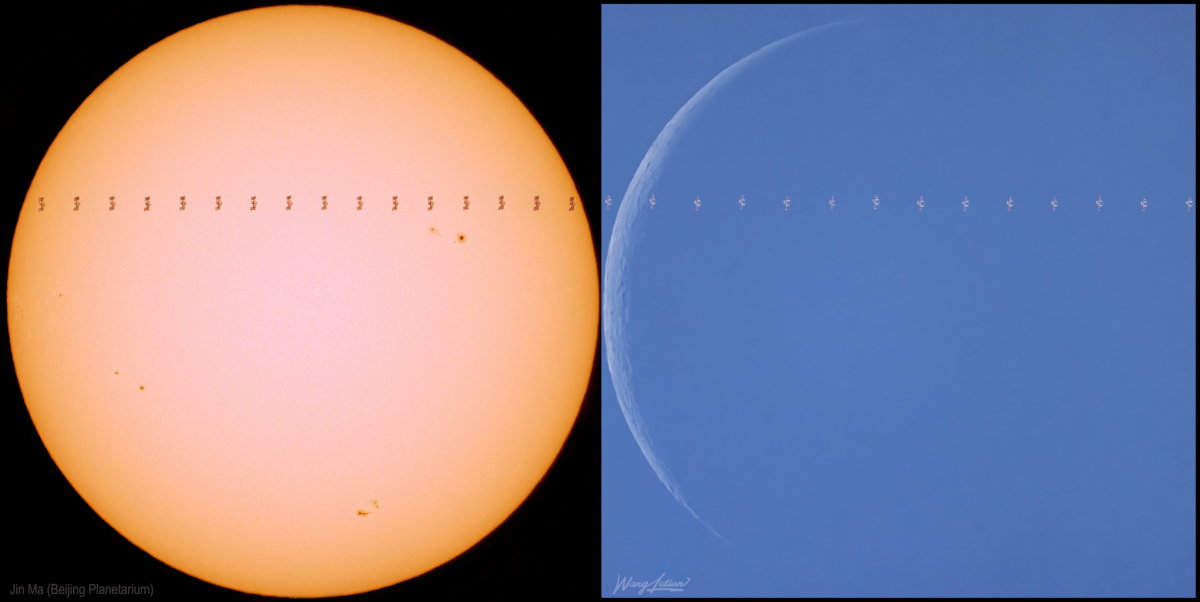2022年9月3日
Sun and Moon and ISS
Image Credit & Copyright: Wang Letian (Eyes at Night), Jin Ma (Beijing Planetarium)
Explanation: On August 25 Sun and Moon could both be seen in planet Earth’s daytime skies. And so could the International Space Station. The ISS crossed the disk of the waning crescent Moon as seen from Shunyi district, Beijing, China at about 11:02 am local time. Some 40 kilometers to the southwest, in Fengtai district, the ISS was seen to cross the Sun’s disk too. The solar transit was observed only 29 seconds later. Both transits are compared in these panels, composed of processed and stacked video frames from the two locations. The coordinated captures were made with different equipment, but adjusted to show the Sun and Moon at the same scale. The ISS was at a calculated range of 435 kilometers for the lunar transit and 491 kilometers when passing in front of the Sun.
Artemis I: Launch Update
Tomorrow’s picture: sea and sky
太阳、月亮与国际太空站
影像提供与版权: Wang Letian (Eyes at Night), Jin Ma (Beijing Planetarium)
说明: 8月25日的白昼天空中,同时可以见到太阳和月亮,而国际太空站也显露了身影。在当地时间上午11:02左右,从中国北京市顺义区看出去,见到了国际太空站凌越残月的月盘。而在西南方约40公里外的丰台区,仅在29秒之后,就见到了国际太空站凌越日盘。这两幅建构自摄于此二处并经过处理及叠加的影片定格之图板,就比较了这二个凌越事件。这个协同摄影工作使用了不同的摄影设备,不过后来经过调整,以相同的比例呈现太阳和月亮。凌月发生之时,根据计算国际太空站的距离为435公里,而凌日时,太空站的距离则为491公里。
阿尔忒弥斯1号任务: 发射状态更新
明日的图片: sea and sky



